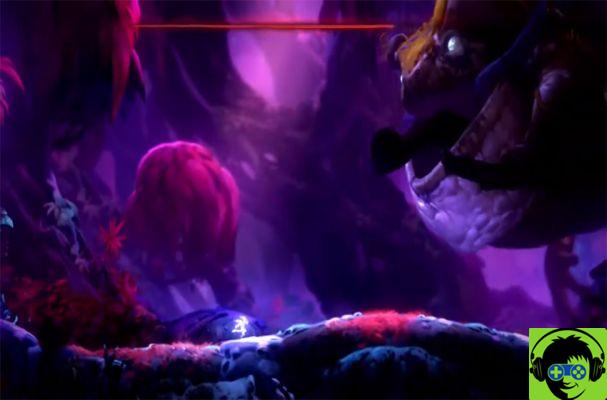The vast majority of photographs around the world are taken with a smartphone, but sometimes the mobile phone is not enough. A dedicated camera, which was born only and exclusively for that, can offer not only superior image quality, but also and above all a versatility that a smartphone simply cannot have. While it is true that lately there are many models of telephones with "optical zoom" available on the market, a camera, be it a compact or an SLR, gives you much more.
First of all it allows you not to consume the battery of your phone, which can also be used for emergencies or for many other reasons, and allows you to "zoom" quality and without loss of detail. In addition, a camera often offers superior ergonomics, different settings that you can choose for each photograph, has a dedicated memory only for photos taken and videos recorded with it. In short, a camera was born only and exclusively for a single purpose, and is undoubtedly the best device for taking photographs.
The choice, however, is not easy and you have to extricate yourself between compact point and shoot, reflex, bridge, mirrorless, but don't worry, if you also have doubts about which camera to buy I will be happy to help you. On this page I will explain the differences between the various categories of cameras that are currently available on the market and some technical notions that never hurt. All to allow you to orient yourself in the choice of your new camera model, be it a compact, a bridge, a mirrorless or an SLR, without having the slightest doubt.
- Best budget camera (under € 300)
- Best mid-range camera (less than 700 €)
- Best high-end camera (more than 700 €)
Types of camera
Without letting ourselves go to too many technicalities, we try to clarify the main types of cameras currently on the market and their reference users.
Compact point and shoot cameras
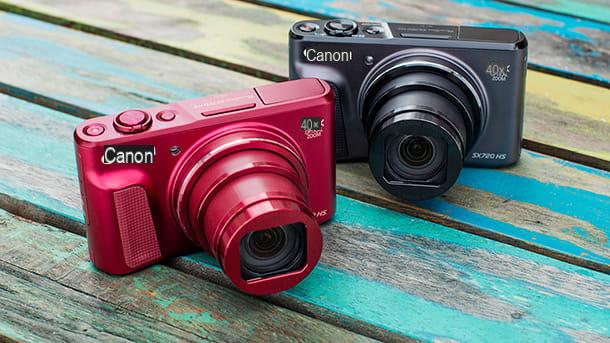
Le fotocamere compatte point and shoot they are cameras for "every day", designed for those looking for comfort above all. They have no complicated settings to adjust and do not embarrass the user of having to choose between various objectives. As their name suggests, to use them, just take them, point them at the subject to be immortalized and shoot: they do the rest for themselves thanks to filters that adjust shooting settings according to the situation.
In most cases they do not offer the quality of the most advanced cameras, not even their flexibility in adjusting the shooting parameters, but on the other hand they are much cheaper and easier to handle. In recent years, however, the so-called compact evolved or professional: they are not at the same level as mirrorless or more expensive reflex cameras, but they can offer great quality shots and completely manual controls. To learn more, take a look at my post dedicated to compact cameras.
Bridge and superzoom cameras
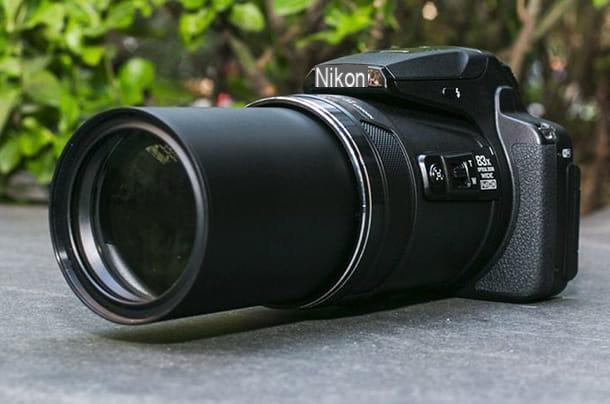
Le bridge they can be ironically defined as compacts that feel Reflex. They have long-range zoom, allow you to adjust more settings than traditional point and shoot but the quality of the shots is not at the levels of professional cameras. Furthermore, usually on bridges there is no possibility to change lenses, a feature that makes them less versatile than reflex or mirrorless cameras.
Halfway between the bridge and the compact are also the superzoom, that is, compact cameras that have optical zooms of over 20x. They are a bit bulkier than point and shoot but weigh less than bridge and, in the more advanced variants, there is the possibility of shooting completely automatically.
mirrorless
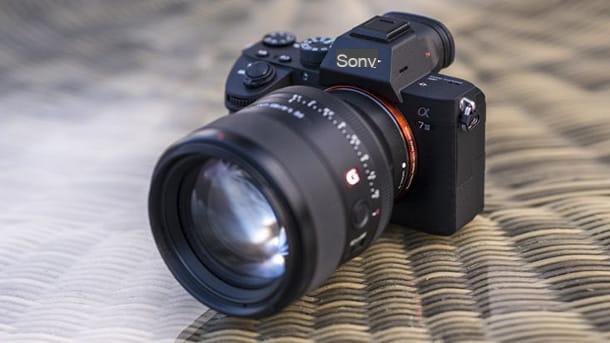
Le mirrorless they are cameras halfway between compact and reflex cameras on which it is possible to mount various lenses. The higher-end models ensure flexibility similar to that of professional cameras, and even the quality of the shots is now comparable, if not even superior in some cases. In recent years, mirrorless cameras have evolved to the point of being able to reach, and in some cases even surpass, the most advanced reflex cameras.
In addition, they are more manageable and lighter than the latter because they do not have the mirror system for the lens. If you want to learn more about the topic, I suggest you read my buying guide on the best mirrorless cameras.
reflex
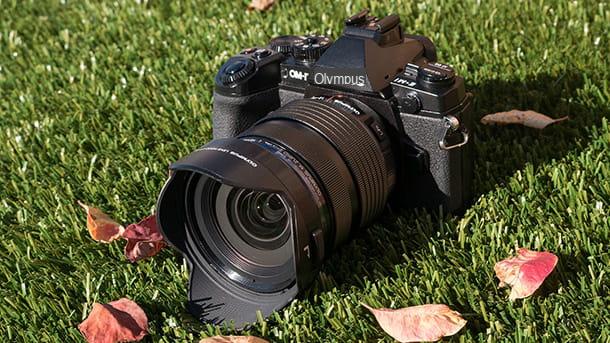
Le reflex (or DSLR) are the most advanced and complete cameras ever. They can be equipped with a wide range of lenses and allow you to precisely adjust all shooting parameters. They are suitable for both professionals and inexperienced enthusiasts, who can take advantage of the automatic optimization functions of the shots. If you want to know more read my article with advice on which Reflex to buy.
Technical features

Once you have chosen a type of camera to buy, to identify the model that best suits your needs you need to take into account some technical aspects. One of these is certainly the number of Megapixels, which, however, is not as fundamental as some producers want us to believe. Megapixels (MP) indicate the number of pixels (in millions) that make up the photos taken by digital cameras, to be precise it is the multiplication of the pixels of the horizontal side of the image by those of the vertical side: they have their importance but from alone do not determine the quality of the shots. Good quality photos are obtained when large sensors (that are able to capture a lot of light) are associated with a high number of pixels. Anyway, I tell you that currently 16 megapixels are also enough for professional use.
Another value that you must take into consideration is that of ISO sensitivity, ie the level of "brightness" of the sensor: when it is high the camera is able to take clear photos even in low light conditions. But be careful, when you take a photo by raising the ISO value too much (which is adjustable) you risk getting an image full of noise.
Always talking about the sensor of a camera, it should be noted that the latter can be of various types: in reflex cameras there are Full Frame ones that measure 24 × 36 mm and therefore are equivalent to the 35mm film format, APS-C ones that measure 23 x 15 mm and have a conversion ratio of 1.5: 1 or 1.6: 1 and those Four Thirds which instead measure 17 x 13 mm and have a conversion ratio of 2: 1. In general, the larger the sensor, the higher the quality of the shots generated. Usually in the compact, in the bridge and in some mirrorless the sensor is smaller than those I have just indicated.
Also contributes significantly to the quality of a shotobiettivo used. To evaluate an objective, one must consider themaximum aperture of the diaphragm which adjusts the amount of light passing through the lens (measured in F-stops, e.g. f / 1,4 or f / 5,6), the focal length and the level of zoom supported (although not all lenses are also zooms). Focal length is the distance between the sensor surface and the center of the objective lens when it is set to focus at infinity. It can be 50 mm (standard), wide-angle (to capture very large areas) or telephoto (i.e. with a focal length greater than the standard lens and therefore capable of magnifying objects compared to the vision of the human eye). More info on the subject can be found in my post on which lens to buy.
Also take into account the resolution and framerate of videos that a camera is capable of, the support to the Wi-Fi (in order to share the shots "on the fly" with other devices) and the presence of GPS to save the geographic location where the shots and videos were taken.
Which camera to buy
With this - and with the insights I invited you to read earlier - I would say that you are ready to choose which camera to buy. So here is a list of compacts, SLRs and other cameras at an attractive price: I'm sure you will also find some that are right for you!
Best budget camera (less than 200 €)
Nikon Coolpix A100 (point and shoot)

With an excellent quality-price ratio we also have the Nikon Coolpix A100, but even in this case I recommend it only if you want to spend too much and don't care much about the final shot quality. In this model we find a 20,1 MP sensor and an optical zoom up to 5x (26-130mm in the 35mm format). It weighs only 120 grams, a feature that makes it extremely easy to carry around in all circumstances, even in your pocket.
Vedi offers your AmazonPanasonic Lumix DMC-SZ10EG-K (point and shoot)

If you want something different than the usual Nikon and Canon I can offer you a Panasonic camera, a brand that is becoming popular in the high-end range in recent years, especially among videomakers. There Panasonic Lumix DMC-SZ10EG-K It is certainly not a professional camera, but it is a good compact camera thanks to its 16 MP sensor combined with a 12x optical zoom with OIS (optical) image stabilization. The lens ranges from 24 to 288mm in the 35mm full frame format. The display is adjustable and there is also the possibility of connecting external peripherals via WiFi.
Vedi offers your AmazonCanon IXUS 285 HS (point and shoot)
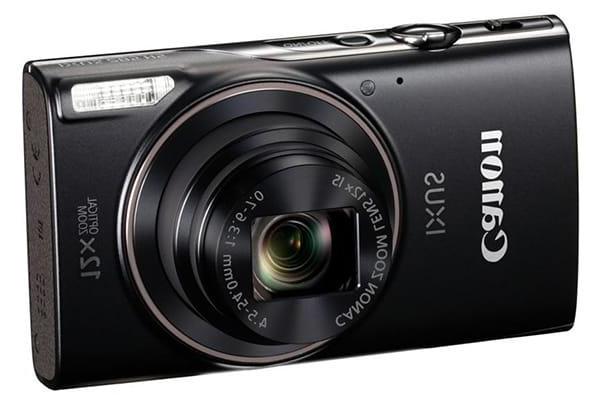
Among the compact point and shoot it is definitely worth taking a look at Canon IXUS 285 HS which has a 20,2 Megapixel CMOS sensor, a 25mm wide angle lens with a focal range of 25-300mm and a 12x optical zoom. It supports Wi-Fi, NFC and GPS and has a 3 ″ display. It also allows you to make Full HD videos in MP4 format.
Vedi offers your AmazonSony DSC-HX60 (point and shoot)
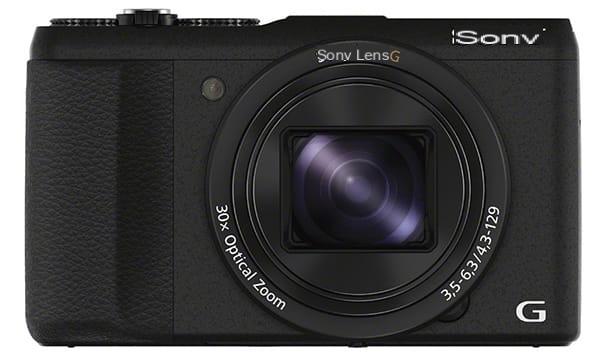
Among the point and shoot we also have the Sony DSC-HX60, with its 20,4 MP sensor and 30x optical zoom. It has several shooting modes and records video at Full HD resolution. In the variant DSC-HX60V it also implements a GPS module, which allows you to save the position where you took the shot among the data present in the image.
Vedi offers your AmazonNikon Coolpix B500 (point and shoot)
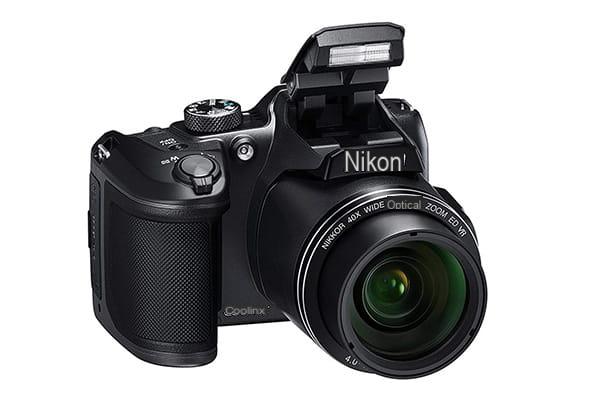
La Nikon Coolpix B500 it is a compact bridge type camera with a 40x optical zoom. It uses a 16MP sensor and offers great ease of operation along with manual shooting modes. The lens supports VR-type stabilization for vibration and shake reduction, for a model that can connect to an external device remotely via the app. The 3 ″ display is tiltable and in terms of video recording we have the possibility to go up to Full HD. Among the shooting modes there is also the specific one for macros.
Best mid-range camera (less than 700 €)
Panasonic Lumix DMC-LX100 (point and shoot)

Another excellent quality compact is the Panasonic Lumix DMC-LX100, which adopts a 12,8MP Four Thirds sensor that can reach a maximum ISO sensitivity of 25.600, thus delivering quality shots even in the dark with relatively little noise. The non-replaceable lens is a quality Leica Vario-Summilux, with high brightness thanks to the aperture of f / 1.7-2.8. Focal lengths covered are 24 to 75mm, and there is the ability to record videos in 4K Ultra HD.
Vedi offers your AmazonCanon 4000D (reflex)

The cheapest reflex that I propose is the Canon EOS 4000D, especially ideal if you are taking your first steps in the world of "serious" photography. This model adopts an 18 MP APS-C CMOS sensor capable of reaching up to 6.400 ISO in native mode extendable up to 12.800. The burst allowed is a maximum of 3 fps, while at the video level there is support for Full HD at 30 fps. WiFi is integrated and the lenses are replaceable: for around € 300 you can find the kit with Canon's versatile 18-55mm.
Vedi offers your AmazonSony Alpha 6000L (mirrorless)

If you are looking for a mirrorless, consider the Sony Alpha 6000L which has a 24.3 Megapixel APS Exmor HD CMOS sensor with 3x optical zoom, an ISO sensitivity from 100 to 25.600 and, of course, allows you to use various lenses. It supports Wi-Fi, NFC and records 1080p video with a 60FPS framerate. It also has an autofocus function, a SVGA OLED Tru-finder and a 3 ″ screen to view and edit photos "on the fly".
Vedi offers your AmazonSony DSC-RX100M4 (point and shoot)

Point-and-shoot cameras aren't all cheap, but there are also high-quality models like the Sony DSC-RX100M4. This model is among the Japanese manufacturer's newest: it uses a 20,1MP Exmor RS CMOS sensor and a Zeiss Vario-Sonnar T lens with 2,9x optical zoom. It can even record at 4K Ultra HD resolution with a 100 Mbps bitrate and has slow motion options up to a maximum of 1000 fps. The viewfinder is of the OLED type.
Vedi offers your AmazonCanon PowerShot G5 X (point and shoot)
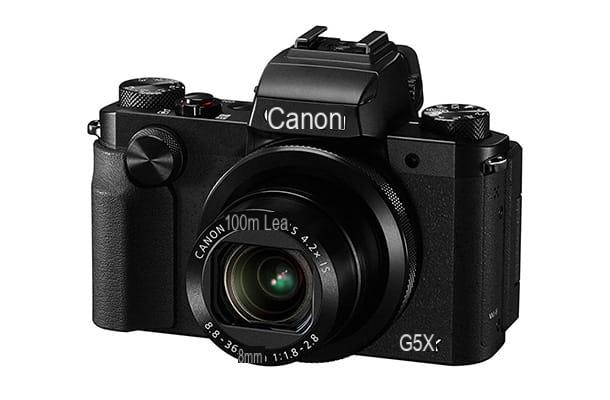
Among the compact quality solutions without interchangeable lenses, I recommend the Canon PowerShot G5 X. It implements a 1 ″ sensor with 20,2 MP resolution, combined with a bright lens with an aperture of f / 1.8-2.8. This camera can save up to 5,9 photos per second in burst mode, records in Full HD at 60 fps and can connect to external devices via WiFi, with NFC pairing.
Nikon Coolpix P950 (bridge superzoom)
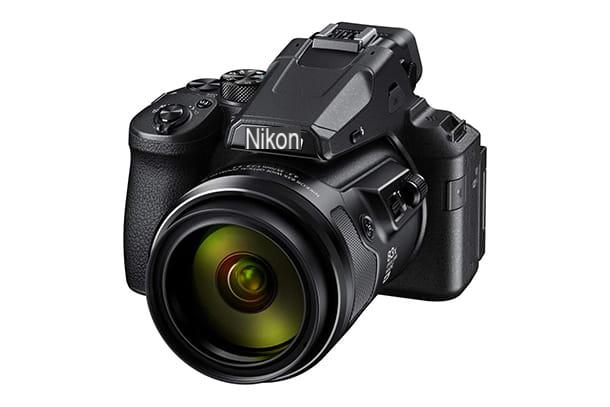
Among the best superzooms on the market we undoubtedly have the Nikon Coolpix P950 which, with a magnification factor of 83x, does not require much explanation. It is a suitable camera for astronomical shots (for example photos of the Moon), especially for those who are not very familiar with manual settings. Among the connectivity solutions we have WiFi, NFC, GPS, while the sensor is 16.79 MP and can record videos in 4K.
Best high-end camera (more than 700 €)
Sony DSC-RX100M6 (point and shoot)

La Sony DSC-RX100M6 it is the top of the Sony range, among the compact, of the latest generation. The sensor is 1 ″ at 20,1 MP resolution, while the lens is a Zeiss 24-200mm equivalent with f / 2.8-4.5 aperture. This model can record up to 960 fps for super slow motion mode, while at normal speed it supports 4K Ultra HD resolution even with high bitrate XAVC S codecs. Quality of photos and videos are at the highest levels.
Sony Alpha 6400L (mirrorless)

If you want a quality camera in a small footprint the model Sony Alpha 6400L truly delivers incredible picture quality in an ultra-low volume body. The sensor is a 24,2 MP Exmor CMOS with APS-C format, while the lens of the kit I propose is an honest 16-50 mm, but you can of course change. This camera can be pushed up to a maximum of ISO 102.400 and can also be used in prosumers (semi-professional). Great for video, with support for 4K HDR and Full HD up to 120 fps.
Nikon D7500 (reflex)

By spending a little more you can buy the most recent Nikon D7500, the best of the Japanese manufacturer for models with sensor in APS-C format, here from 20,9 MP. It accommodates all DX lenses compatible with Nikon SLRs with this format, and can go up to a maximum of ISO 164.000 in extension, and up to ISO 51.200 in native mode. The sensor has 51 focus points (with subject tracking capability). This model can also record in 4K Ultra HD, up to a maximum of 30 frames per second.
Vedi offers your AmazonDSC 6A Mark XNUMX (reflex)
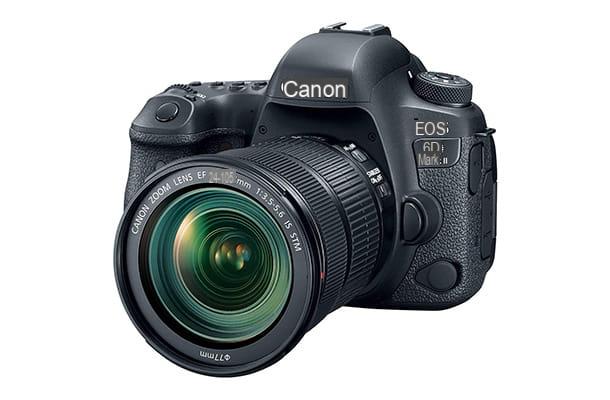
A high-end SLR, designed for professionals, is the Canon EOS 6D Mark II, with 26,2 MP Full Frame format sensor and the ability to reach a maximum of 40.000 ISO in native mode, extendable to 102.400 ISO. As for the videos, however, it is possible to reach a value of ISO 25.600. The integrated processor is the company's proprietary Digic 7, while as regards the lenses we have the possibility to install the EF-S and EF-M. The autofocus is taken care of by a system with 45 cross points.
Vedi offers your AmazonSony Alpha 7 III (mirrorless)

La Sony Alpha 7 III it is among the best mirrorless cameras available on the market, thanks to the 24,2 MP Full Frame sensor and the ability to replace the lens for the maximum possible artistic expression. The lens that I propose to you in the kit below is a good 28-70mm with f / 3.5-5.6 aperture, equipped with optical stabilization. This camera can shoot 10fps bursts, supports up to ISO 204.800 and records in 4K Ultra HD, as well as HDR30 with HLG. The display is rotatable and there is also an OLED viewfinder.
Vedi offers your AmazonPanasonic Lumix GH5 (mirrorless)

Among the favorite models of videomakers is the Panasonic Lumix GH5, which implements a 20 MP sensor without low pass filter and a dual image stabilizer: one with five axes in the camera body, the other in the lens. In addition to the different manual modes for videos and photos, and the different connectivity solutions, this model can record in 4K Ultra HD even at the rate of 60 frames per second.
Vedi offers your AmazonA DSC (mirrorless)
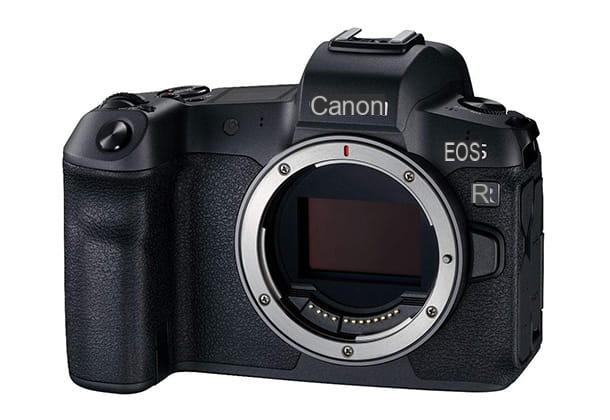
This is a professional mirrorless type camera, the first with full frame sensor produced by Canon. There Canon EOS is the spearhead of the Canon range for mirrorless cameras, and supports a resolution of 30,3MP with very fast focus, support for Wi-Fi, Bluetooth, 4K Ultra HD in video recording and the ability to go up to 40000 ISO. The burst, on the other hand, is 8 fps, which are not few on a full frame sensor.
Nikon Z6

Another professional mirrorless with full frame sensor, among the best ever. There Nikon Z6 offers a 24,5MP sensor with 273 points for autofocus and an OLED viewfinder. It accommodates the lenses of the Nikon Z Mount family, designed specifically for the family of mirrorless “Z” cameras, and is combined in this kit that I propose below with a good 24-70mm all-rounder with fixed f / 4 aperture. It supports up to 51200 ISO, 4K Ultra HD video recording at 30 fps and has a 3,2 "display.


















